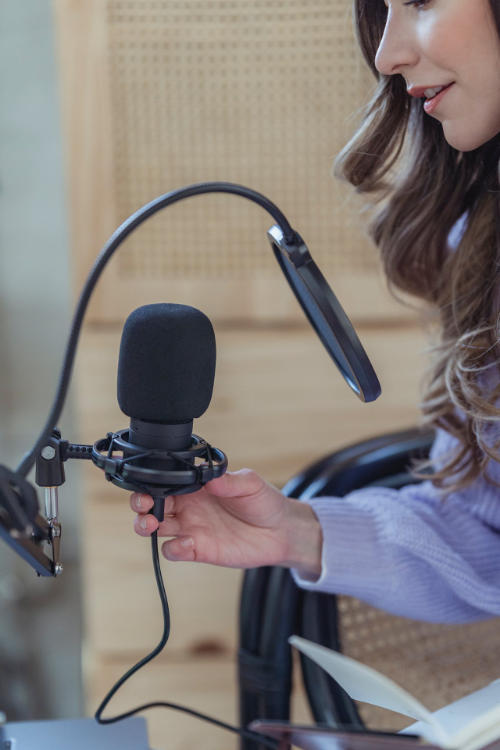Estimated reading time: 10 minutes
Pitch correction is an essential aspect of modern music production, playing a crucial role in refining vocal performances and achieving the desired musical sound. In the realm of music production, pitch correction refers to the process of adjusting the pitch of individual notes or phrases within a vocal track to ensure they are in tune with the song’s key. This technique has become increasingly prevalent in the industry, shaping the way music is recorded, mixed, and produced. Understanding the fundamentals of pitch correction is imperative for both aspiring and seasoned music producers, as it can significantly impact the overall quality and appeal of a musical piece.
Pitch correction is not solely limited to rectifying pitch inaccuracies; it also enables producers to explore creative possibilities, such as achieving unique vocal effects and enhancing the emotive quality of a vocal performance. By delving into the intricacies of pitch correction, producers can gain valuable insights into its technical aspects and artistic implications, ultimately elevating the sonic excellence of their music.
Table of contents
- The Importance of Pitch Correction in Music Production
- How Pitch Correction Works
- Types of Pitch Correction Techniques
- Popular Pitch Correction Plugins – Antares Auto-Tune, Celemony Melodyne, Synchro Arts
- The Impact of Pitch Correction on Vocal Performance
- Vocal Tuning vs. Auto-Tune: Understanding the Difference
- Achieving Natural Vocal Effects with Pitch Correction
- Best Practices for Correcting Pitch in Vocal Tracks
- Conclusion
- FAQ
The Importance of Pitch Correction in Music Production
The significance of pitch correction in music production cannot be overstated, as it serves as a fundamental tool for refining vocal performances and achieving sonic precision. In the context of a recording studio, vocalists may encounter instances where their natural pitch deviates from the intended musical scale, leading to noticeable discrepancies in the overall tonal quality of their performance. Pitch correction offers a remedy for such imperfections, allowing producers to seamlessly rectify pitch inconsistencies and ensure that the vocals align harmoniously with the accompanying musical elements.
Moreover, in the competitive landscape of the music industry, the pursuit of perfection in vocal delivery is a defining factor in capturing the audience’s attention and leaving a lasting impression. The meticulous application of pitch correction empowers artists and producers to fine-tune vocal recordings with unparalleled precision, thereby enhancing the overall cohesiveness and impact of the musical composition. By leveraging pitch correction as a transformative tool, music creators can elevate the standard of their productions and cultivate a distinct sonic identity within the industry.
How Pitch Correction Works
Pitch correction operates through the utilization of specialized software and digital signal processing techniques to analyze and manipulate the pitch characteristics of vocal recordings. At its core, the process involves detecting the pitch of individual notes within a vocal performance and subsequently adjusting them to conform to the desired musical scale. This intricate procedure is facilitated by advanced algorithms that identify pitch deviations and facilitate real-time or post-production corrections, thereby ensuring that the vocals seamlessly integrate with the harmonic framework of the composition.
The implementation of pitch correction entails a meticulous approach, wherein producers can fine-tune the pitch of specific notes, correct sustained pitch inaccuracies, and even modify the overall tonal characteristics of a vocal performance. This level of precision enables producers to sculpt the sonic landscape of a song with unparalleled control, nurturing a seamless synergy between the vocals and the instrumental arrangement. By harnessing the capabilities of pitch correction technology, producers can transcend the limitations of traditional recording methods and unlock a realm of creative possibilities in music production.
Types of Pitch Correction Techniques
In the domain of music production, pitch correction encompasses a diverse array of techniques and methodologies, each offering unique approaches to refining vocal pitch and tonality. One of the prominent methods is real-time pitch correction, which involves the instantaneous processing of vocal signals during the recording phase to ensure consistent pitch accuracy. This approach empowers vocalists to deliver performances with enhanced confidence, knowing that any pitch discrepancies will be rectified in real time, thereby streamlining the creative process and fostering a conducive recording environment.
Conversely, post-production pitch correction entails the meticulous analysis and adjustment of vocal pitch after the recording phase, affording producers the flexibility to meticulously refine every nuance of the vocal performance. This method facilitates a comprehensive examination of the vocal delivery, enabling producers to address subtle pitch imperfections and elevate the overall cohesiveness of the vocal track. By leveraging post-production pitch correction techniques, producers can exercise precise control over the tonal characteristics of the vocals and curate a captivating auditory experience for the audience.
Popular Pitch Correction Plugins – Antares Auto-Tune, Celemony Melodyne, Synchro Arts
In the realm of music production, several pioneering pitch correction plugins have garnered widespread acclaim for their exceptional capabilities in refining vocal pitch and infusing artistic nuances into vocal performances. Antares Auto-Tune stands as a venerated industry standard, renowned for its seamless integration and advanced pitch correction algorithms. This iconic plugin empowers producers to achieve pristine vocal tuning, explore creative pitch modulation effects, and elevate the overall quality of vocal recordings with unparalleled precision.
Celemony Melodyne represents another formidable contender in the realm of pitch correction plugins, distinguished for its innovative DNA (Direct Note Access) technology and comprehensive pitch editing functionalities. This groundbreaking plugin enables producers to exert granular control over the pitch, timing, and phrasing of vocal performances, fostering a dynamic platform for sculpting expressive vocal arrangements and refining the tonal characteristics of individual notes.
Furthermore, Synchro Arts has emerged as a trailblazer in the realm of pitch correction technology, offering the acclaimed VocALign plugin that revolutionizes vocal alignment and pitch correction processes. This versatile tool empowers producers to synchronize vocal performances with unprecedented accuracy, ensuring seamless integration within the musical arrangement and enhancing the overall coherence of vocal tracks.
| Pitch Correction Plugin | Key Features |
|---|---|
| Antares Auto-Tune | Real-time pitch correction, creative pitch modulation effects, seamless integration |
| Celemony Melodyne | DNA (Direct Note Access) technology, comprehensive pitch editing functionalities, intuitive interface |
| Synchro Arts VocALign | Vocal alignment with unprecedented accuracy, seamless integration within musical arrangement |
The Impact of Pitch Correction on Vocal Performance

The advent of pitch correction technology has wielded a profound influence on the landscape of vocal performance, reshaping the conventional paradigms of vocal delivery and enabling artists to transcend the limitations of traditional recording techniques. By providing a platform for refining vocal pitch with unparalleled precision, pitch correction technology has empowered vocalists to explore new horizons of artistic expression, elevating the emotive resonance of their performances and cultivating a distinct sonic identity within the music industry.
Moreover, pitch correction has redefined the standards of vocal excellence, fostering an environment where artists can strive for unprecedented levels of precision and cohesiveness in their vocal deliveries. This transformative impact has instilled a culture of meticulous attention to detail, prompting vocalists to hone their craft and deliver performances that resonate with unparalleled clarity and emotional depth. As a result, pitch correction has catalyzed a paradigm shift in the realm of vocal performance, heralding a new era of sonic refinement and artistic ingenuity.
Pitch Perfect: How Pitch Correction Can Elevate Your Music Production
Vocal Tuning vs. Auto-Tune: Understanding the Difference
The distinction between vocal tuning and Auto-Tune represents a pivotal aspect of pitch correction, elucidating the nuanced differences in their applications and implications within the context of music production. Vocal tuning encompasses the broader spectrum of pitch correction techniques, encompassing the meticulous adjustment of vocal pitch and tonality to ensure seamless integration within the musical arrangement. This multifaceted process enables producers to refine the nuances of vocal performances, address subtle pitch inconsistencies, and curate captivating vocal arrangements that resonate with emotive depth and sonic precision.
Conversely, Auto-Tune refers to a specific pitch correction technology developed by Antares Audio Technologies, renowned for its pioneering role in revolutionizing the music industry. Auto-Tune operates through the implementation of advanced algorithms that detect and rectify pitch deviations in real time, ensuring that vocal performances align harmoniously with the intended musical scale. This iconic technology has transcended its utilitarian function, evolving into a creative tool that enables producers to explore innovative pitch modulation effects, sculpt expressive vocal arrangements, and infuse distinctive sonic characteristics into vocal performances.
Achieving Natural Vocal Effects with Pitch Correction
Amidst the technological advancements in pitch correction, the pursuit of natural vocal effects remains a focal point for producers seeking to imbue their music with an organic and authentic sonic identity. Leveraging pitch correction technology to achieve natural vocal effects necessitates a nuanced understanding of vocal timbre, phrasing, and emotive nuances, enabling producers to preserve the innate expressiveness of vocal performances while refining pitch accuracy.
In this pursuit, producers can harness the capabilities of pitch correction plugins such as Celemony Melodyne, renowned for its intuitive pitch editing functionalities and seamless integration with diverse vocal styles. By delicately manipulating the pitch characteristics of vocal performances, producers can evoke natural vocal effects that resonate with emotive depth and authenticity, forging an intimate connection with the audience and imbuing the music with a captivating sense of vulnerability and sincerity.
Best Practices for Correcting Pitch in Vocal Tracks
Achieving exemplary pitch correction in vocal tracks necessitates a comprehensive understanding of best practices and meticulous attention to detail, ensuring that the process yields a seamless integration of vocal performances within the musical arrangement. To this end, producers are advised to commence the pitch correction process by meticulously analyzing the vocal recordings, identifying subtle pitch discrepancies, and establishing a comprehensive roadmap for refining the tonal characteristics of the acapella vocals.
Subsequently, leveraging advanced pitch correction plugins such as Antares Auto-Tune or Celemony Melodyne enables producers to exert granular control over the pitch, timing, and phrasing of vocal performances, fostering a dynamic platform for sculpting expressive vocal arrangements and refining the tonal characteristics of individual notes. By adhering to best practices and exercising precision in pitch correction, producers can elevate the standard of vocal excellence within their music productions, establishing a compelling sonic identity and resonating with audiences on a profound emotional level.
Conclusion
In conclusion, demystifying pitch correction unveils its multifaceted role in shaping the landscape of modern music production, heralding a new era of sonic refinement and artistic ingenuity. By comprehensively dissecting the intricacies of pitch correction, producers can gain valuable insights into its technical underpinnings and artistic implications, enabling them to elevate the standard of their music productions and cultivate a distinct sonic identity within the industry. As the music landscape continues to evolve, pitch correction technology stands as a transformative force, empowering artists and producers to refine vocal performances with unparalleled precision, infuse emotive depth into their musical compositions, and captivate audiences with a captivating auditory experience.
Related Posts
- Best Autotune Plugin: Find the Perfect Autotune Plugin for your Music Production Needs
- What Is Indie Music and Why It Matters – Discovering the Essence of Indie Music
- What is a Vocalist? Everything You Need to Know
FAQ
Pitch correction serves as a fundamental tool for refining vocal performances and ensuring that vocal recordings align harmoniously with the intended musical scale.
Pitch correction technology has reshaped the conventional paradigms of vocal delivery, empowering artists to explore new horizons of artistic expression and elevate the emotive resonance of their performances.
Antares Auto-Tune offers real-time pitch correction and creative pitch modulation effects, while Celemony Melodyne features DNA (Direct Note Access) technology and comprehensive pitch editing functionalities.
Meticulous analysis of vocal recordings, precise adjustment of pitch characteristics, and leveraging advanced pitch correction plugins are essential for achieving exemplary pitch correction in vocal tracks.
By delicately manipulating the pitch characteristics of vocal performances, producers can evoke natural vocal effects that resonate with emotive depth and authenticity, forging an intimate connection with the audience.
